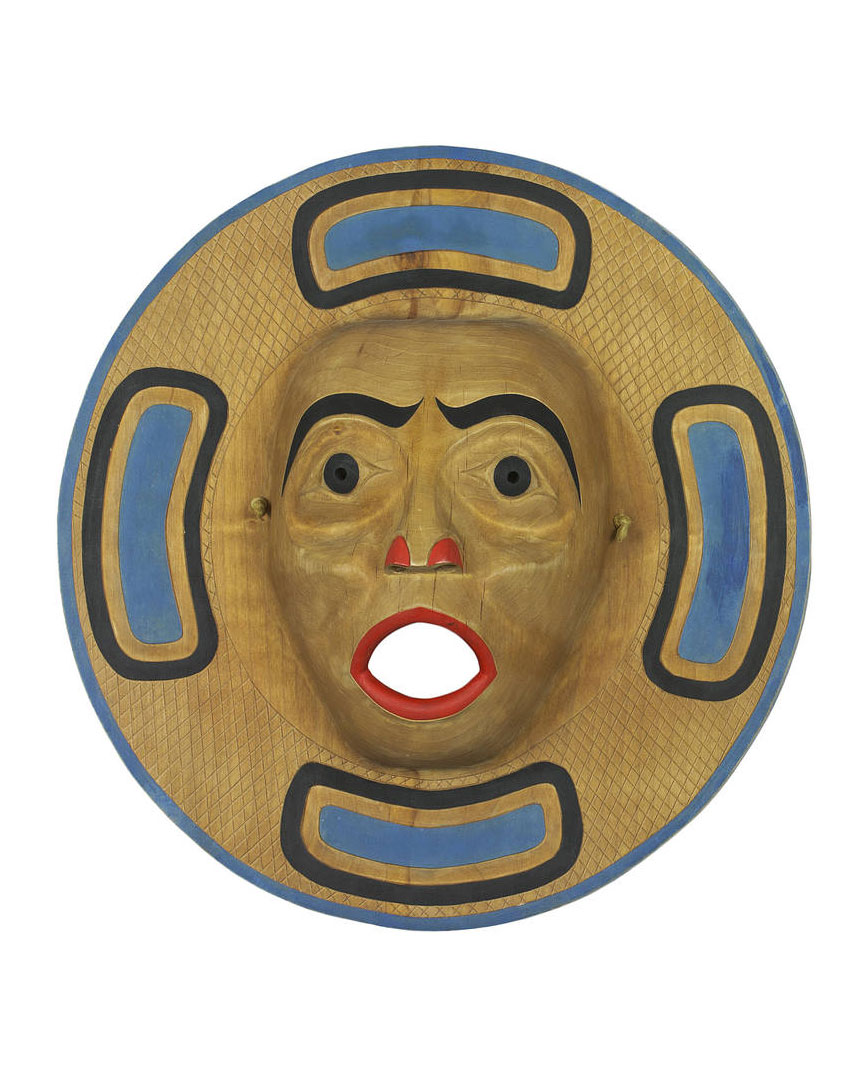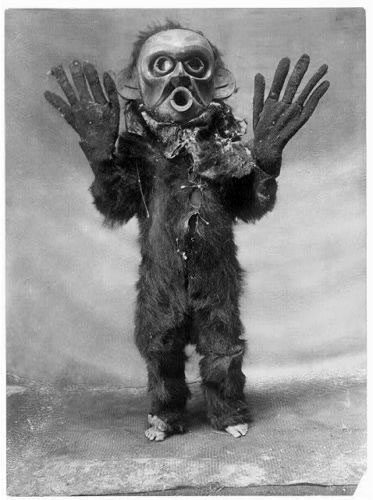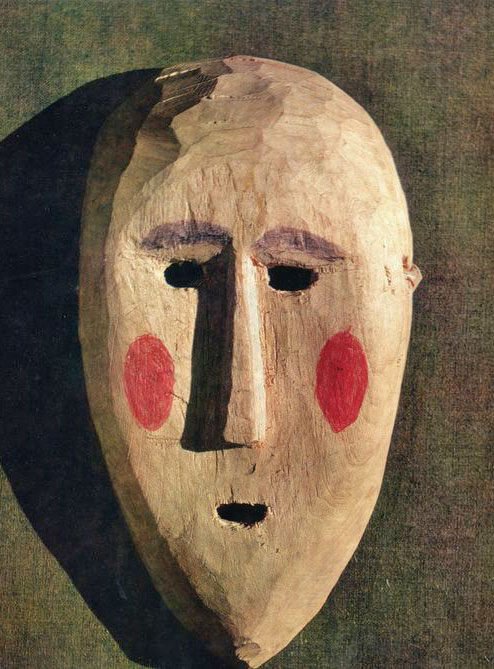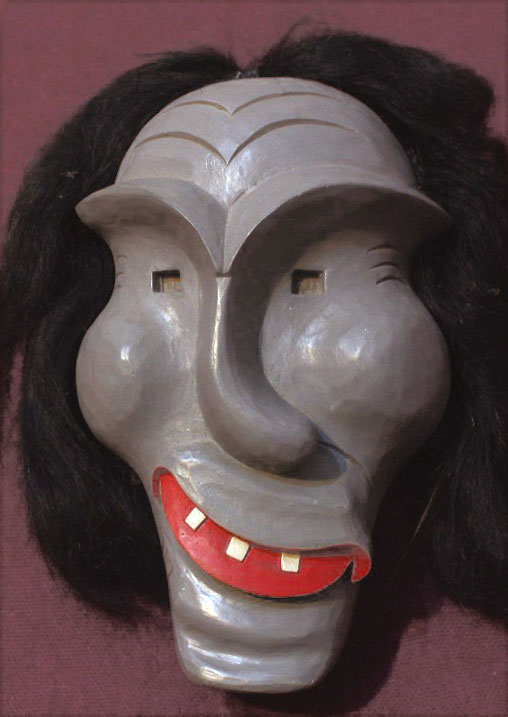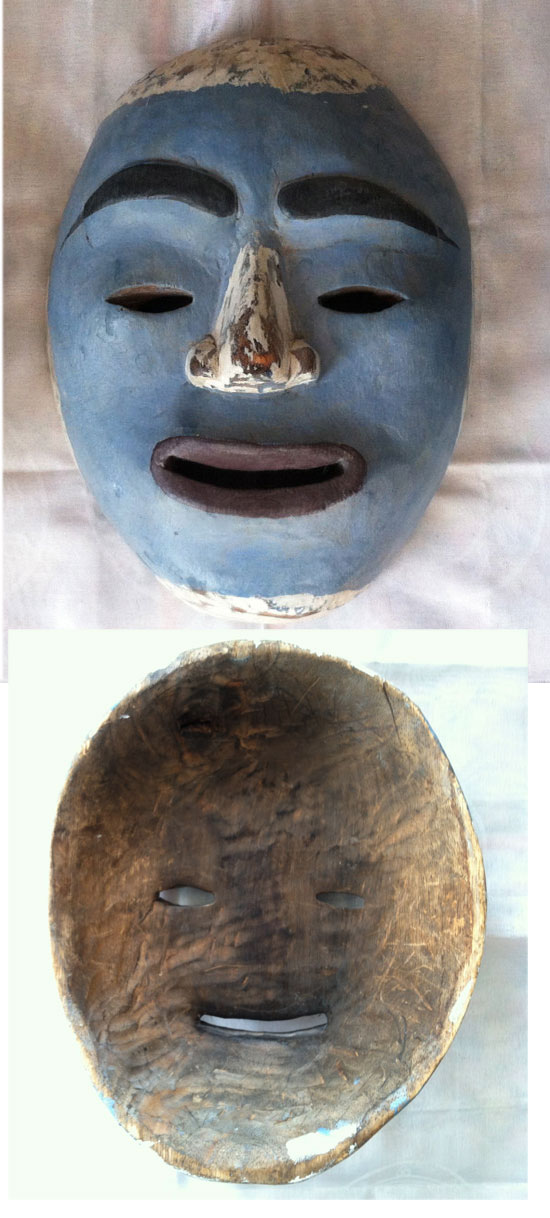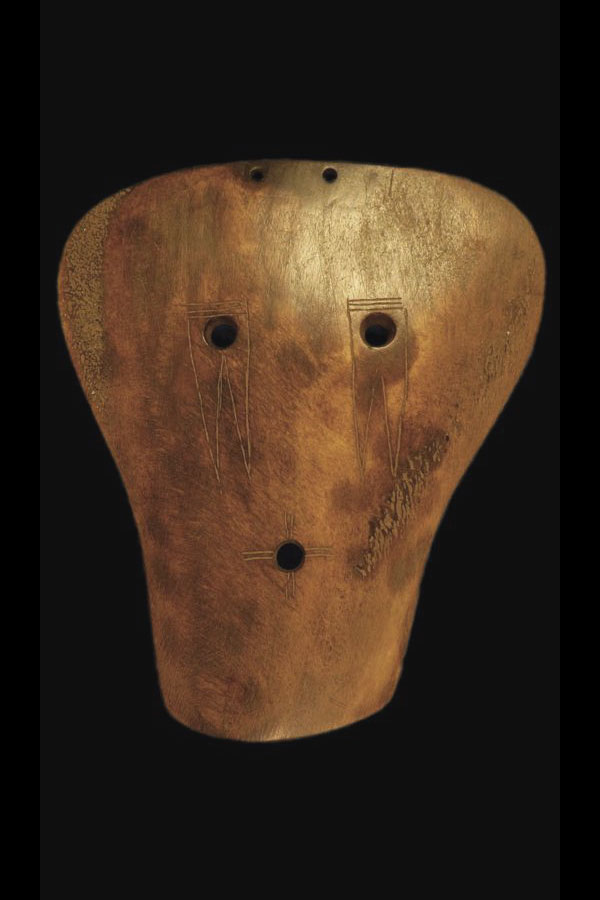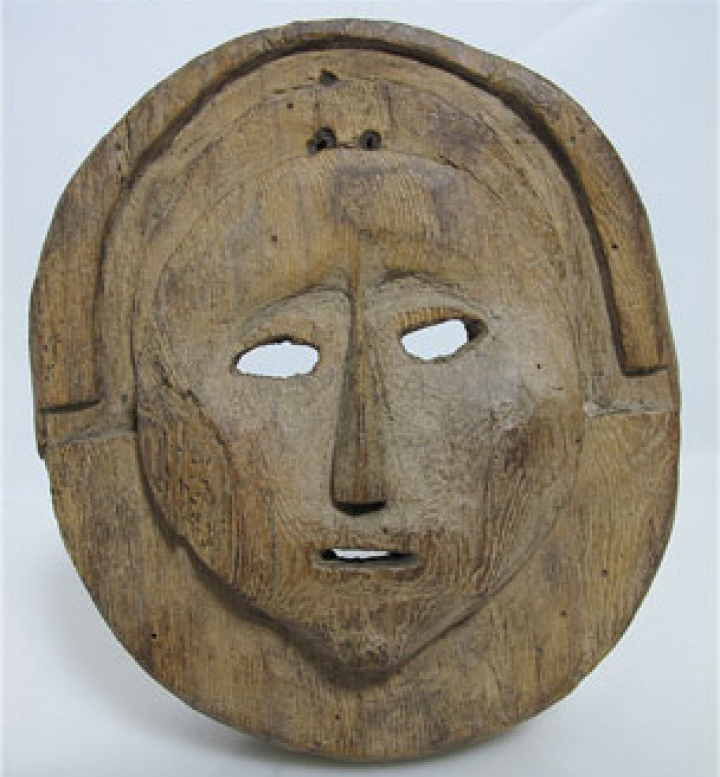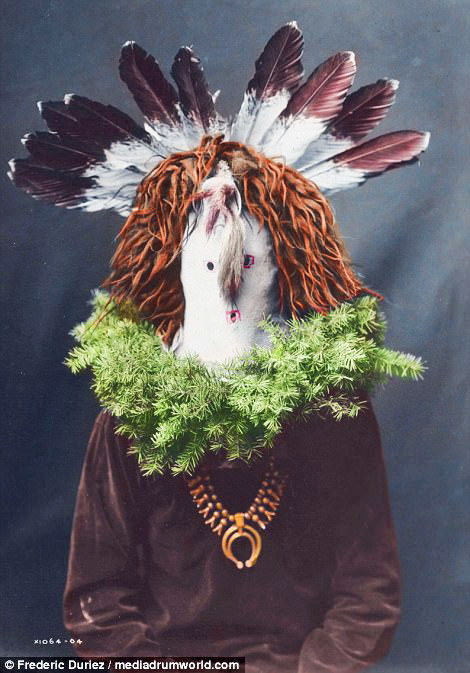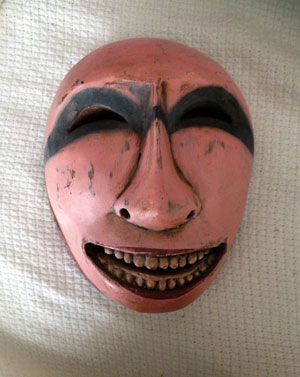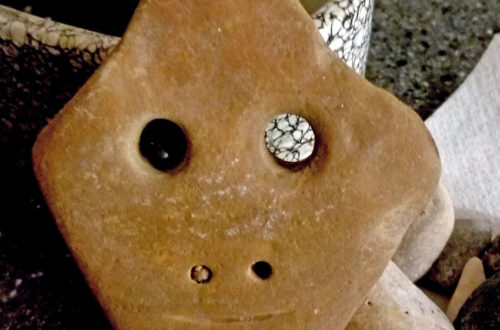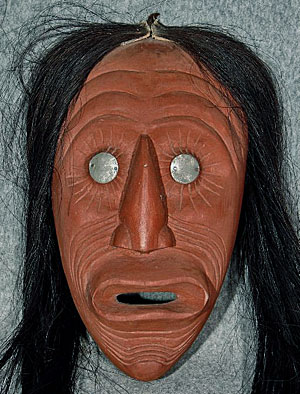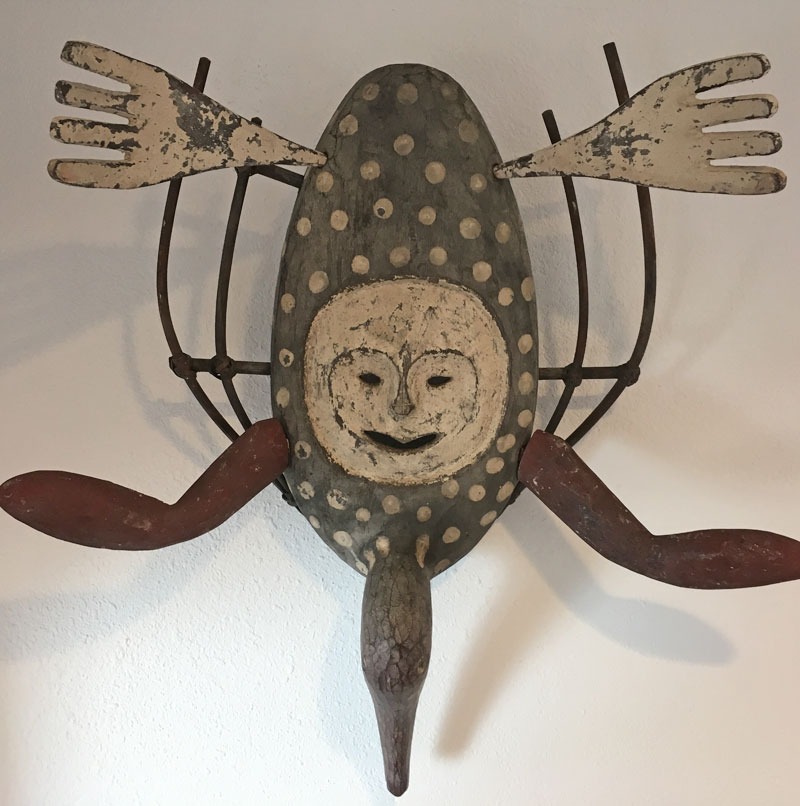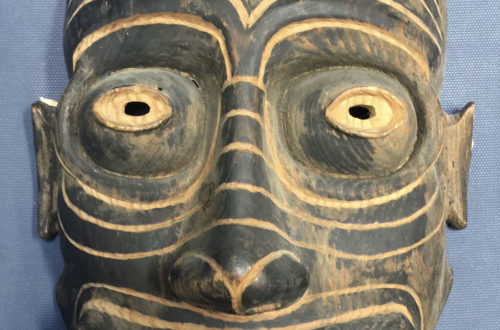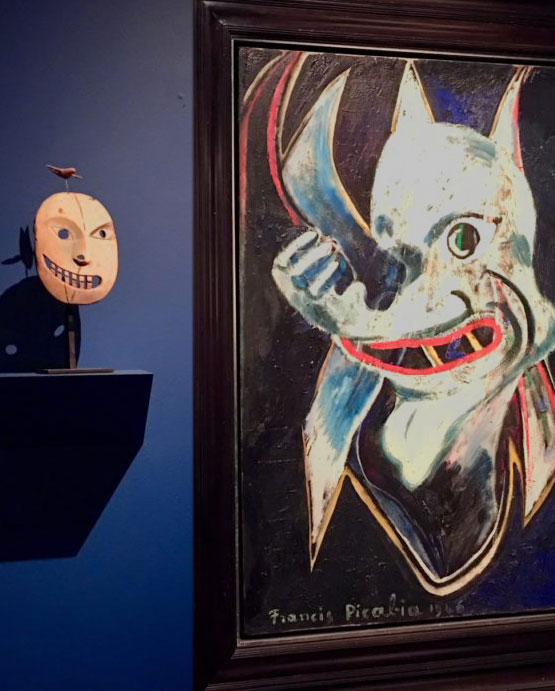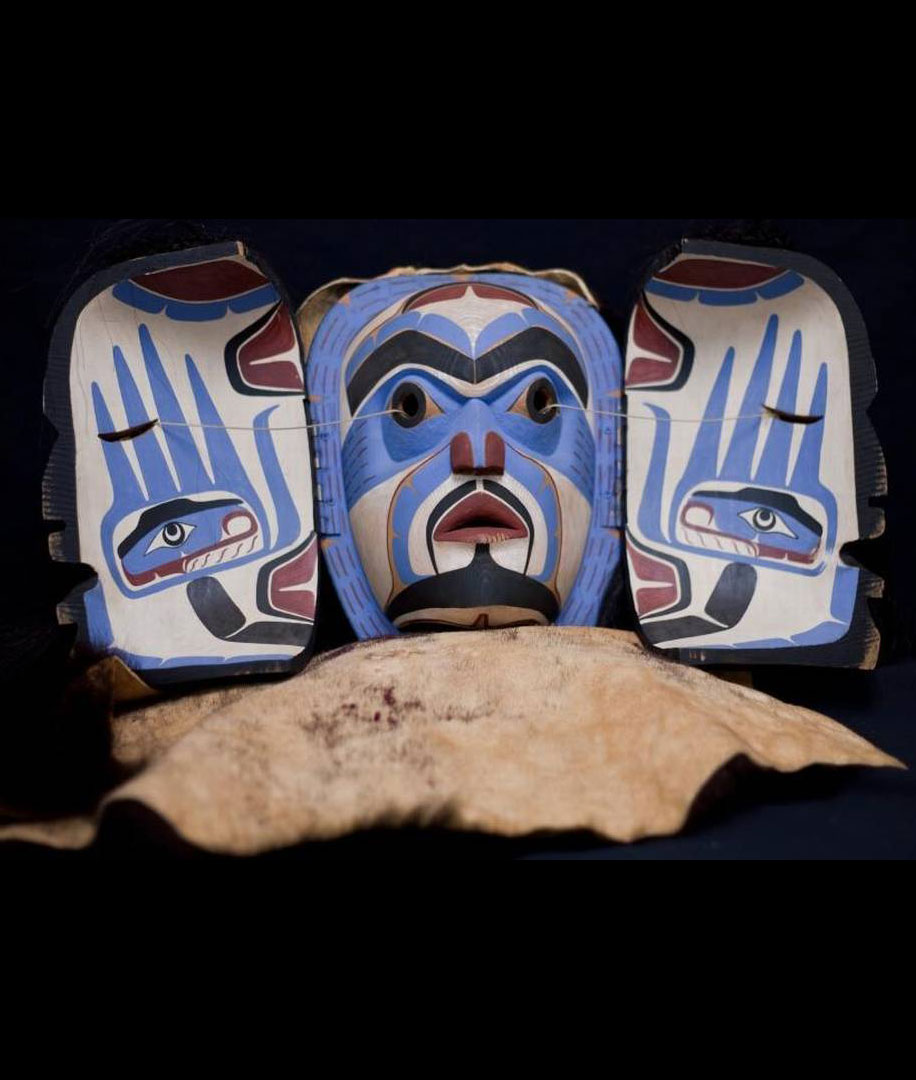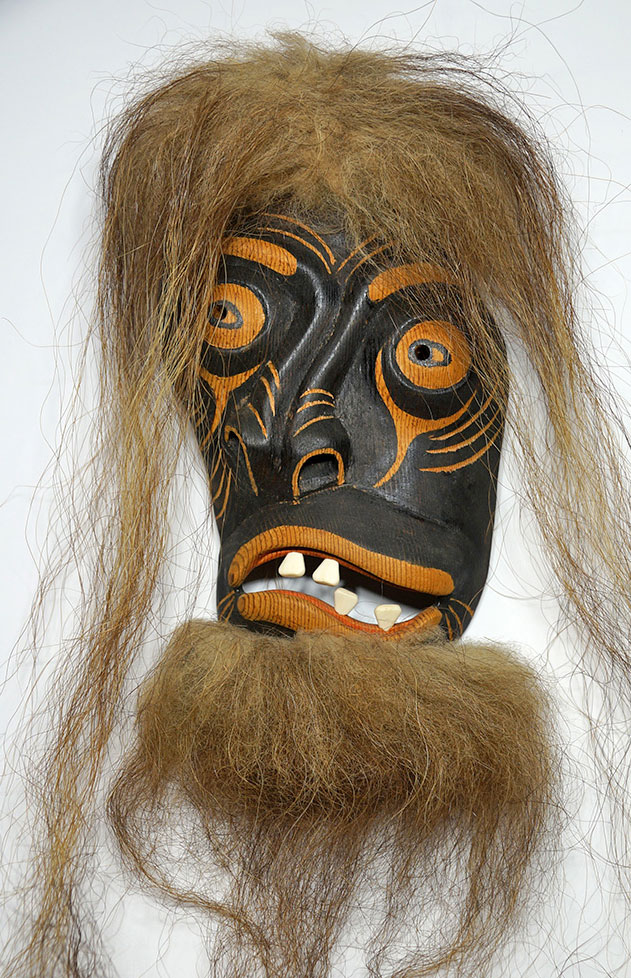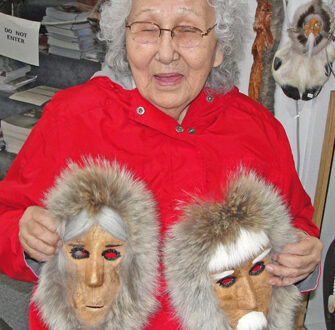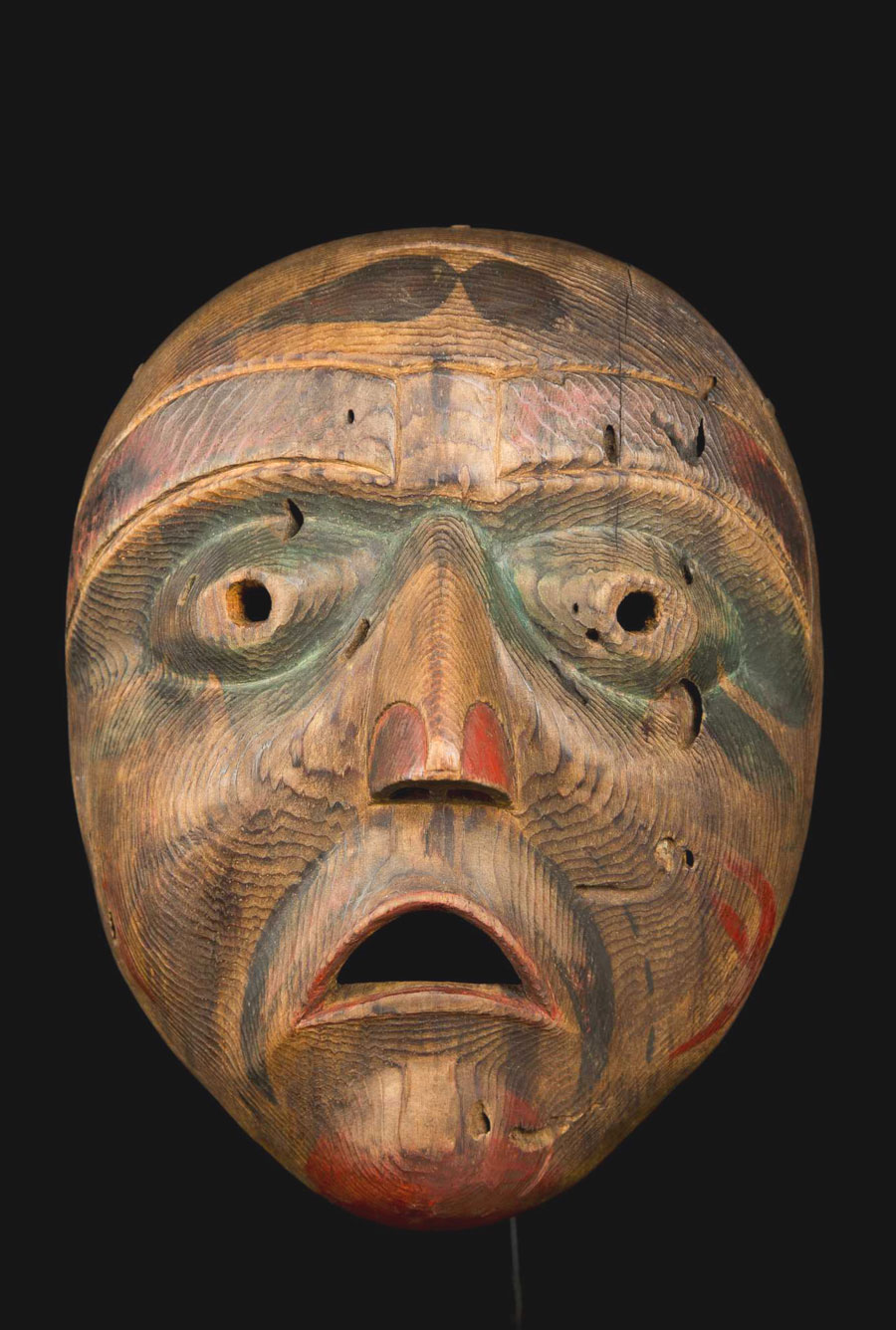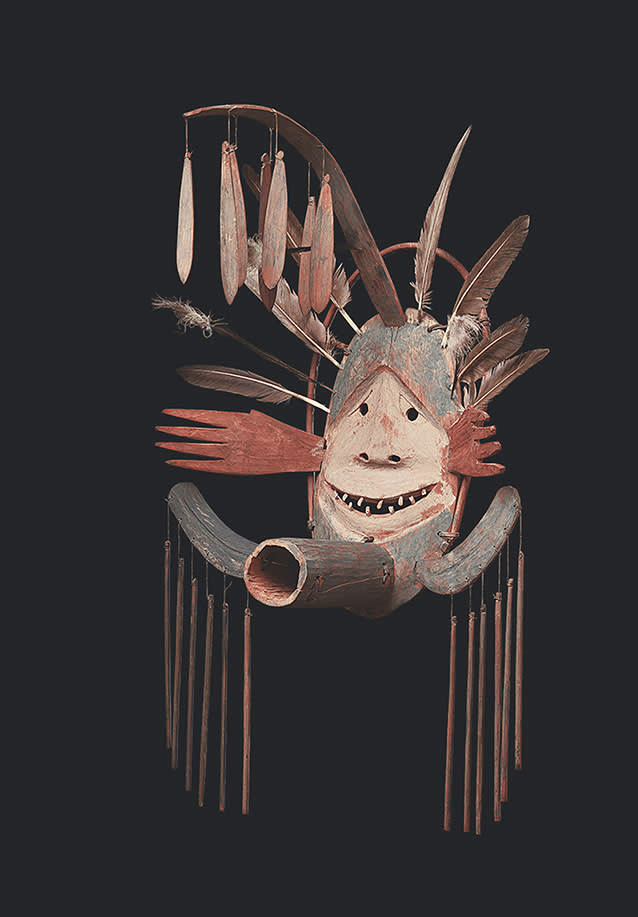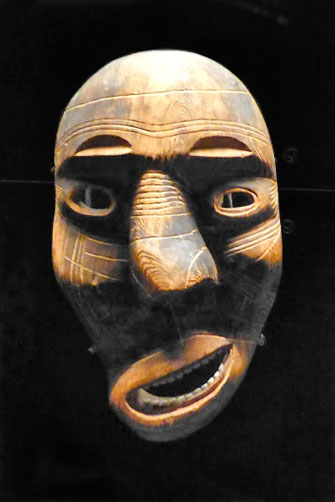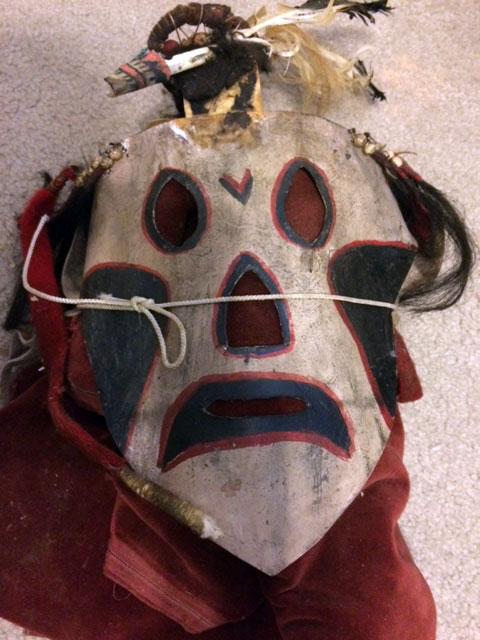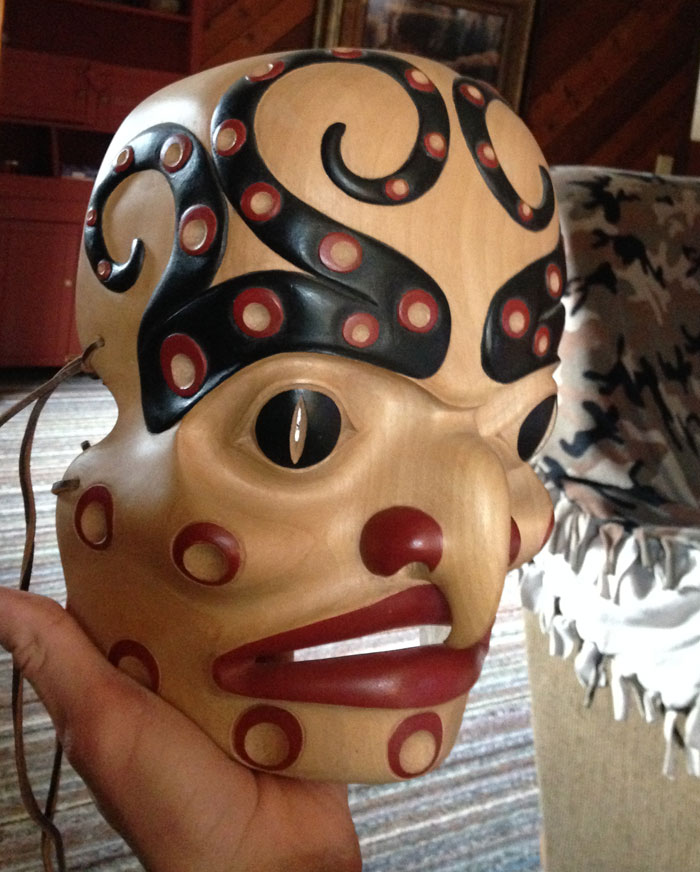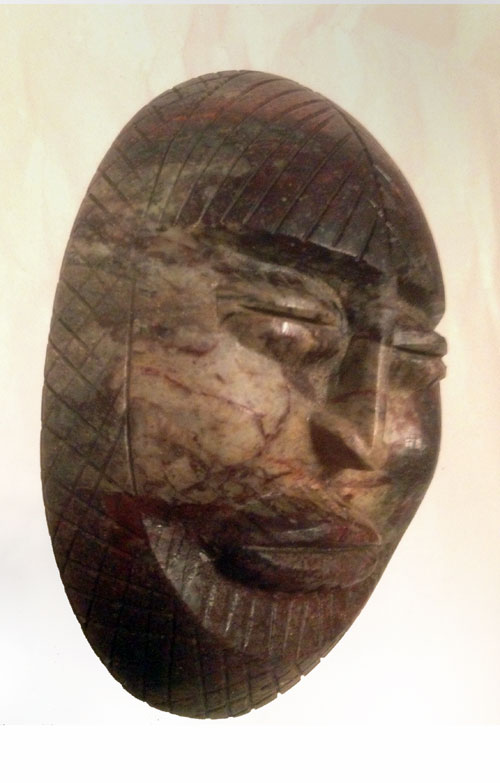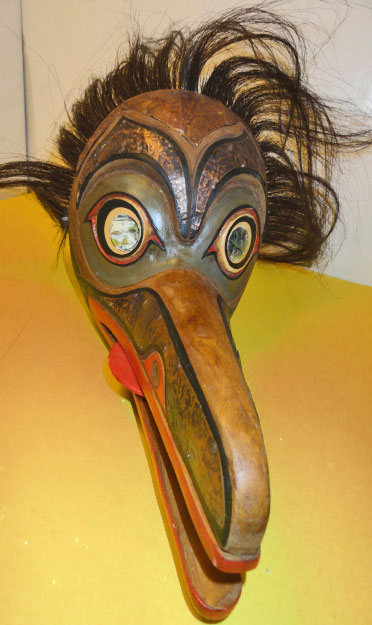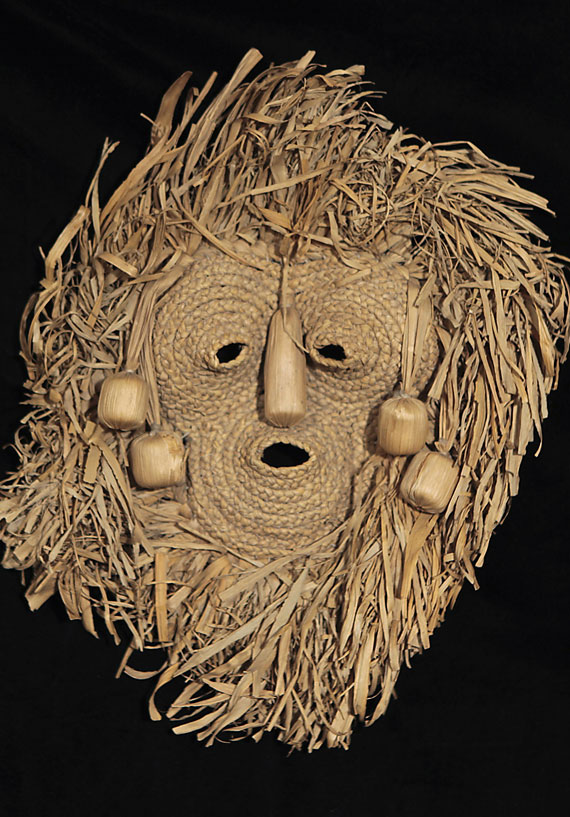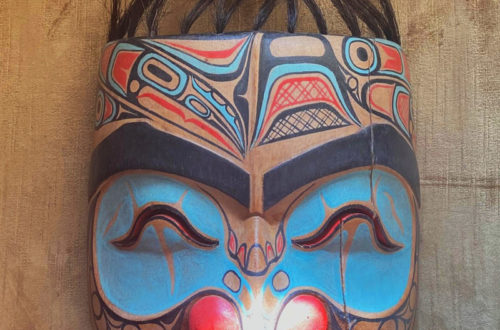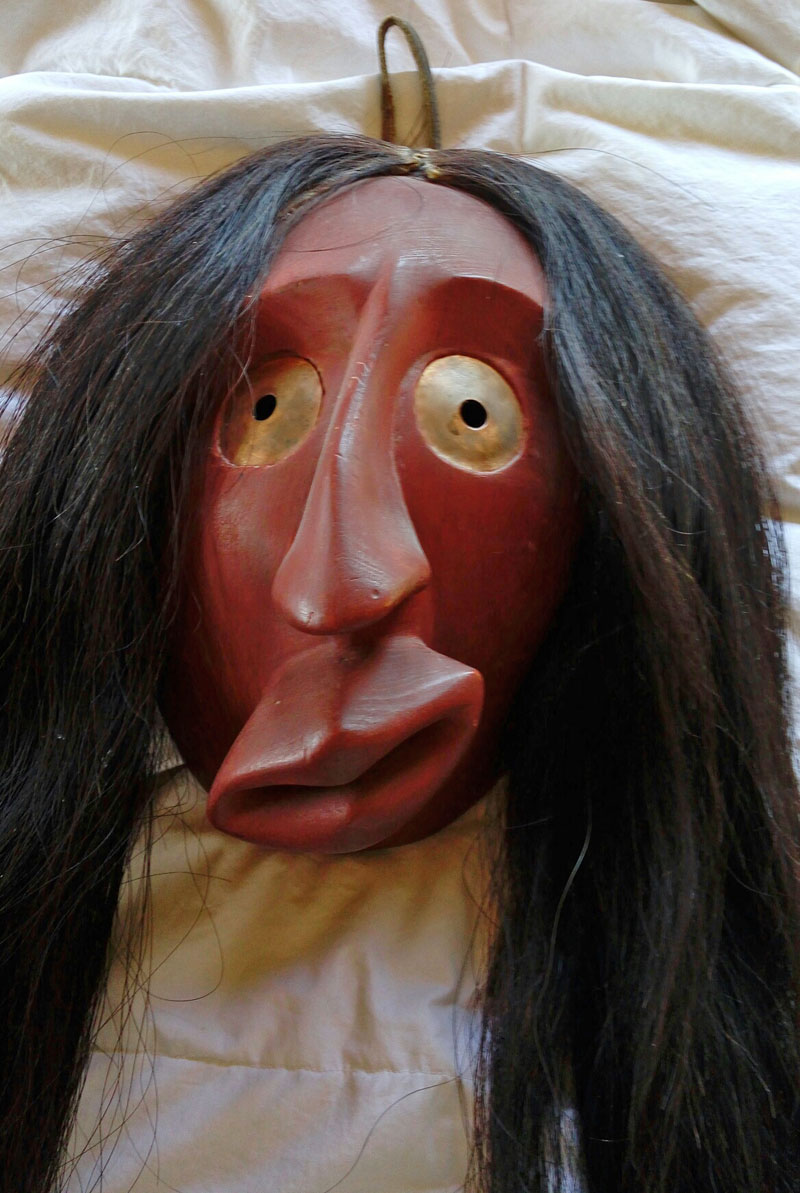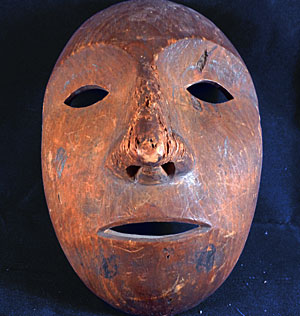This is a large circular mask carved from alder featuring a central human face set in a wide, flat radial border. The mask was made by artist and carver Peter Prevost of British Columbia, Canada and is Haida in style. The rim of the mask is carved wood and the face protrudes outward from the rim and has eye holes plus an open mouth. I got this on an interesting website by the Smithsonian Institution that is called www.grius.si.edu
-
-
Iroquois false face mask
Q: I’m 22 years old. I have been fascinated with masks all my life. Decided to study art oriented towards sculpture to make my own designs so for the last year I’ve been working with masks in parallel with the university. I’ve worked with papier mache and latex, made some replicas and some personal designs. I also collect masks. You wanted some more shots of my False Face piece, so here they are. what can you tell me about it? Tomas, 1261 A: The False Faces are masks carved from the living trunk of a tree. These masks represent the strange, wild beings who inhabit the forests and rarely, only…
-
Photos of old Navajo masks
Spiritual healing: Fascinating colorized images show Navajo men wearing eerie masks of the gods used during a medical ritual in the early 20th century Edward S Curtis was paid $75,000 in the early 1900s by J P Morgan to document the North American Indians. He spent the next 20 years observing their culture, taking more than 40,000 images of 80 different tribes. This series examines the Navajo Night Chant, a healing ceremony involving masked men dressed as deities. The ritual lasts for nine days during which the patient is regularly sweated and attended by the masked figures. Read more: http://www.dailymail.co.uk/news/article-5171113/100-year-old-images-Navajo-gods-used-healing-ritual.html#ixzz51HPZJE00 Follow us: @MailOnline on Twitter | DailyMail on Facebook
-
Another Eskimo mask from Alaska
Q: I bought a series of Yup’ik masks from an antique dealer–they were from an estate sale and had been originally purchased in the 1950s. I just wanted your opinion of this particular one (which is one of the two best ones in the collection). The dimensions are 22″ high, 8″ wide for mask alone, 14″ wide including lattice sticks on side (which I think represent ripples in the water) but not including appendages, and about 2 1/2″ depth for mask alone (not including appendages). Matthew, 1234 A: Yup’ik masks play an important role in the ceremonial life of these Eskimos who live close to the Bering Sea. A…
-
How masks help tell the legend of the Wild Woman
Tsonokwa transformation masks made by artist Scott Jensen are part of the Whatcom Museum education collection. The story of Tsonokwa (Dzunuk’wa, Tsonoqua) or Wild Woman of the Woods, is a Northwest Coast Native legend about a mythical, dark-haired, large female being who captures children and carries them home in a basket to eventually eat them. Parents used the Tsonokwa story as a warning to keep their children safe and discourage them from venturing too far into the forest “or Tsonokwa might get you and eat you.” In the story, the children usually manage to outwit Tsonokwa and escape from her captivity. Many Northwest Coast native artists have created cedar masks…
-
Eskimo artifacts: fantasy in a cold climate
This is part of an article by Susan More in the Sep 29, 2017 Financial Times. Both masks are Yup’ik and, if you found one, it better be a recently-made fake or you surely wouldn’t be able to afford it. These are more Surreal than we are!, an indignant André Breton apparently exclaimed when he first encountered a Yup’ik ceremonial mask in New York. It is little wonder that the Surrealists were fascinated by these colored, strikingly adorned artifacts since they are among the most inventive, expressive and fantastical of all tribal arts. We threw ourselves into the poetic atmosphere of the Eskimo masks. We breathe in Alaska, we dream…
-
Native American Octopus mask
Q: Got this mask from a neighbor who passed away. Was told a few names who it could be from the signature, done a lot of research and can’t confirm an artist nor tribe. Logan, 1224 A: Let’s not give up on this excellent, very original tribal mask from the Northwest Coast of Canada or the US called “Transforming Octopus.” Unfortunately I can’t read the carver’s signature. There are a number of skilled Indian carvers from this area and plenty of collectors from all over who could help us learn more about this mask. I hope some of them make a comment. Here’s my comment. NWC Indian carvers make some…
-
Pacific Northwest of US and Canada
Let’s remember that the the first people here in the US and Canada were making great folk art a thousand years ago… and still do. Check out this recently used mask made by the Heiltsuk people of Bella Bella, British Columbia. The tradition of masquerade is alive and well in the NWC area. Masks like this one are used in religious ceremonies, and many more are carefully produced for collectors. We should be thankful that our first inhabitants are willing share their art with all of us. Let me point out that very few NWC masks are asymmetrical, as is this one. In the book Masks of the World, by…
-
3 masks from Greenland
Masks of the World is the name of this website, so it behooves me to occasionally show masks from unusual locations. Let’s visit Greenland today. These photos were taken by Mary Payne at the Quai Branly Museum in Paris. It is famous for its important collection of ethnographic arts. Called Kiaapaatt masks, these three were collected in 1934 from somewhere in Greenland. I’m assuming the Kiaapaatt are an Inuit culture that immigrated from Canada after the 13th century. I’ve seen Inuit masks from Northern Canada that look slightly like these. Bob, 1175
-
Iroquois False Face Mask
Q: This mask was given to my Father-in-law (who recently passed away) by a friend in Gallop, New Mexico, in the early 1960’s. We believe it is an Iroquois False Face mask, but there are no markings on the inside, so it might be a replica. What info can you provide? Richard, 1123 A: I think this is a well carved example of the bent-nose-and-mouth-style mask that would be hard to find these days. 55 years ago there were some talented Native American carvers that did good work like this, and they often didn’t sign them. I have written about similar Iroquois masks on the Mystery Mask blog before. Also,…
